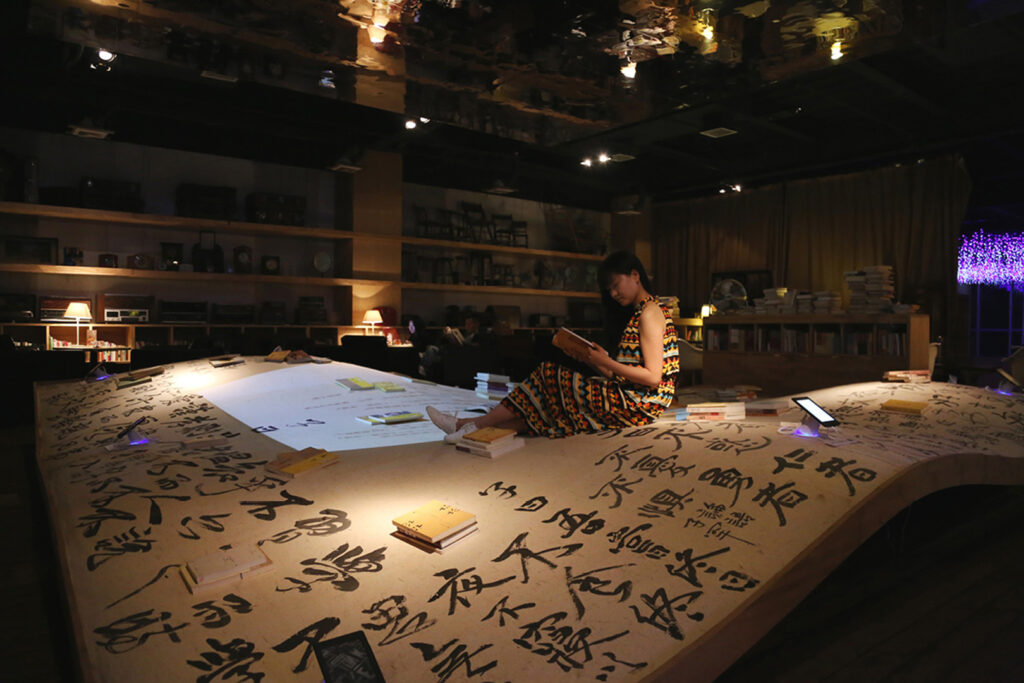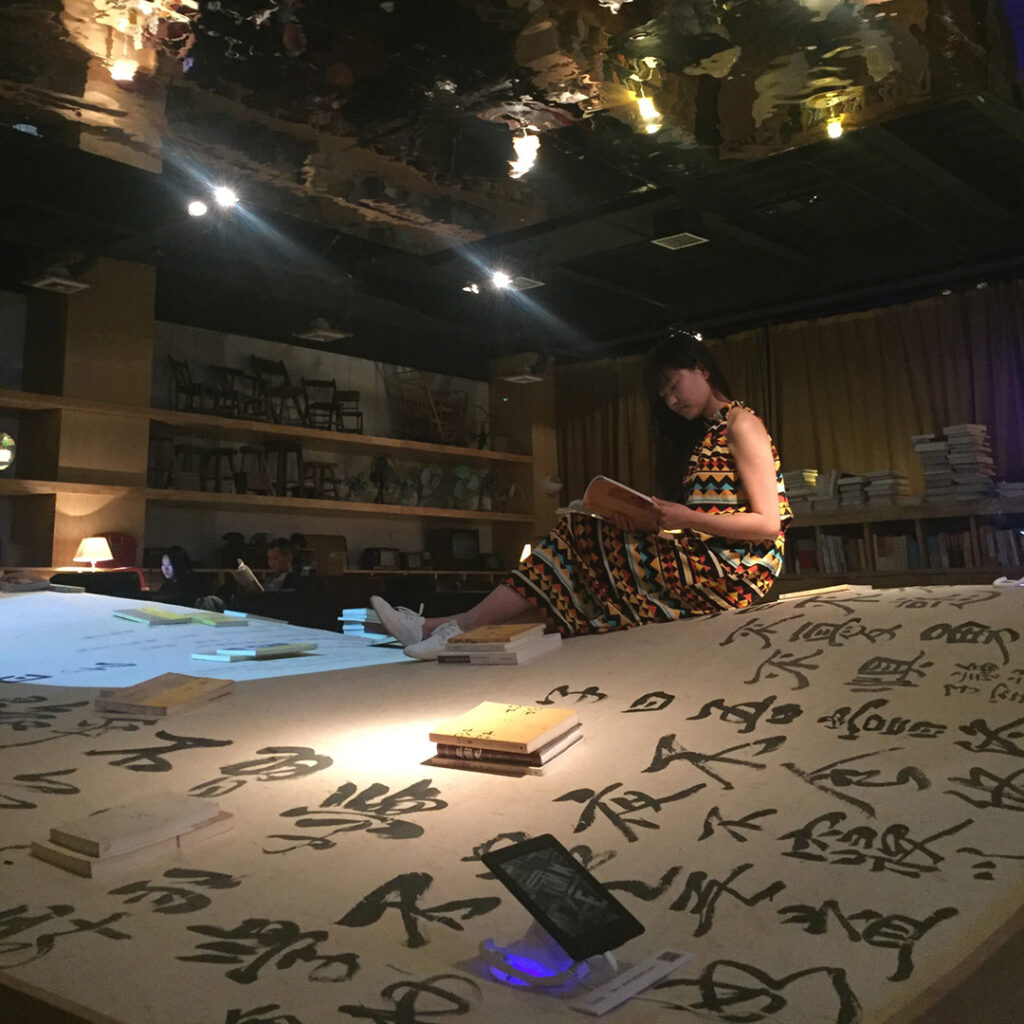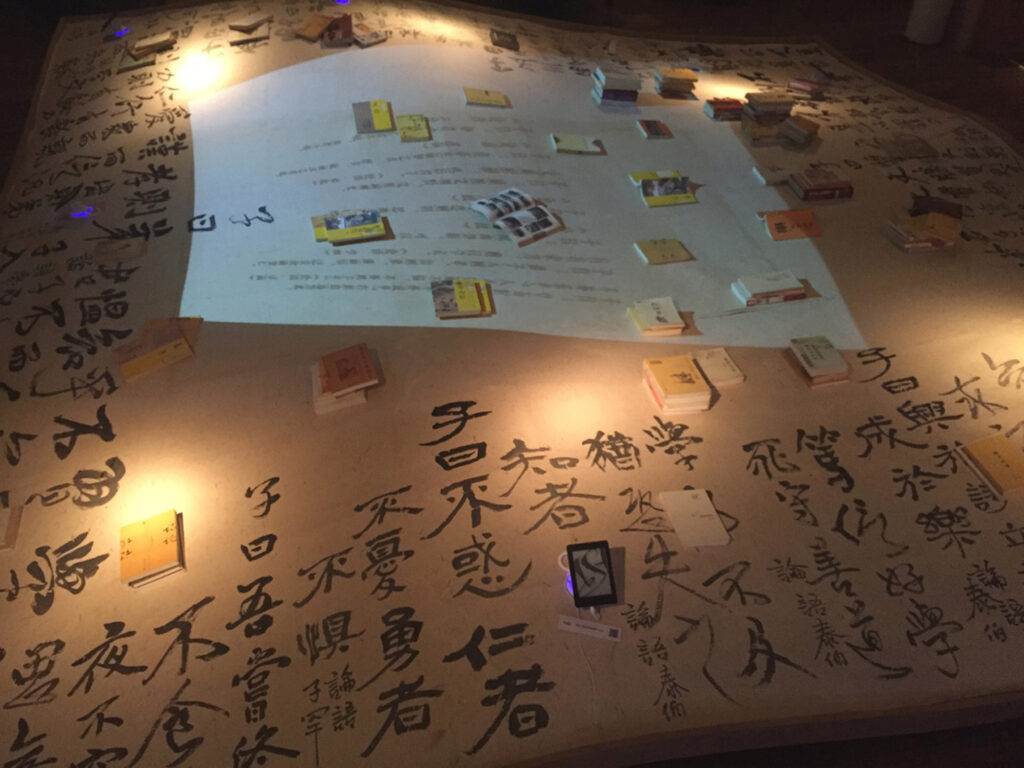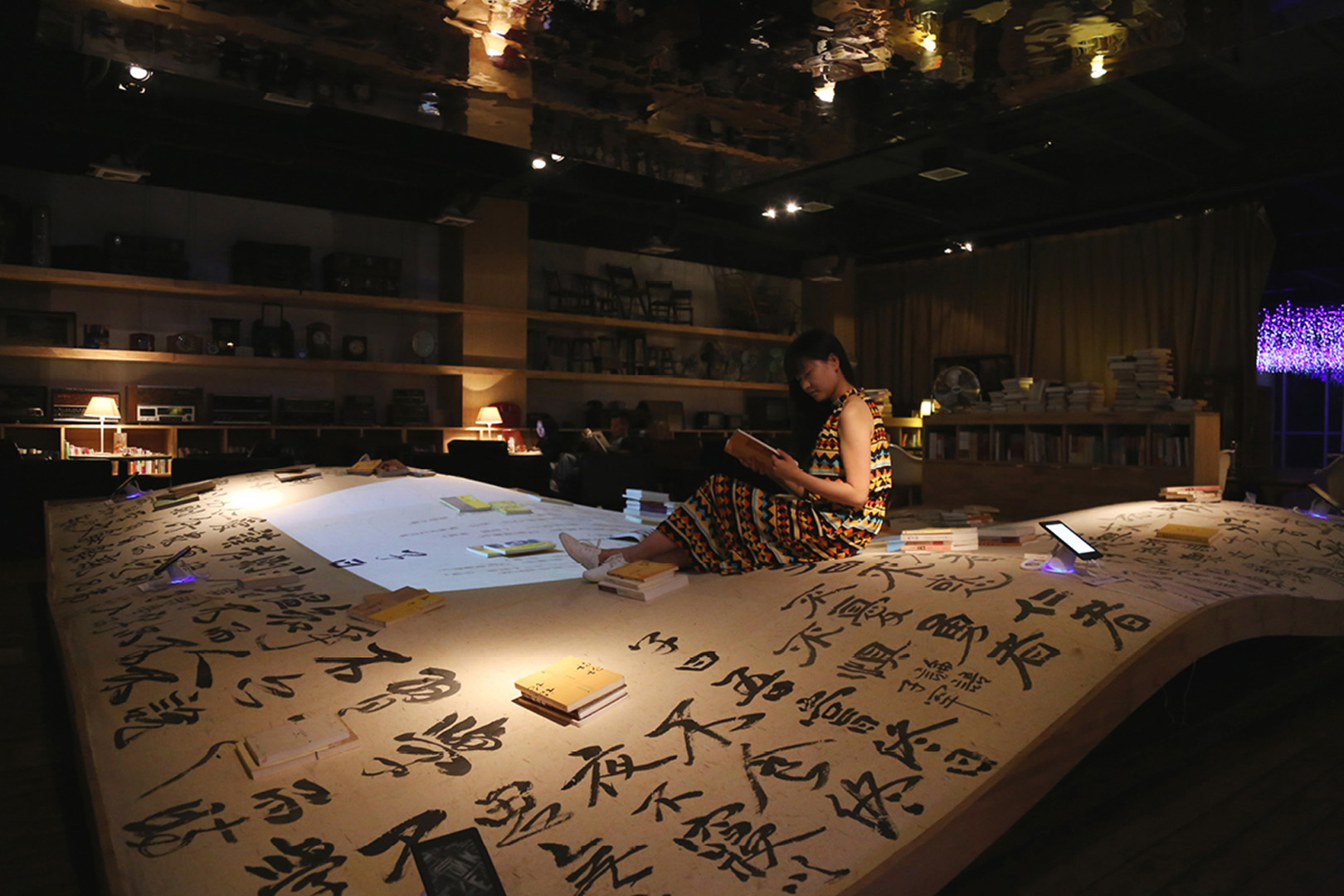Design: 2016
Construction: 2016
Books have traditionally been a repository of knowledge for everyone, yet the act of reading is a very personal, intimate experience. The relation with books started not too long ago. Before their invention and popularization, the Chinese civilization used ink rubbings to faithfully reproduce original works of art and calligraphy. The engraved, polished stone surfaces of the rubbings were the predecessors of the book pages; the most important of which were erected as steles. Without rival, the largest collection of important steles is found in the Confucius Temple in Xian. It is one of the first true “libraries.” The first Emperor of the Qin Dynasty in Xian, Qin Shi Huang, unified China and its written characters. It is also rumored that he burned books and buried scholars for political reasons – notably those of Confucius – causing the loss of many philosophical treatises of the Hundred Schools of Thought.
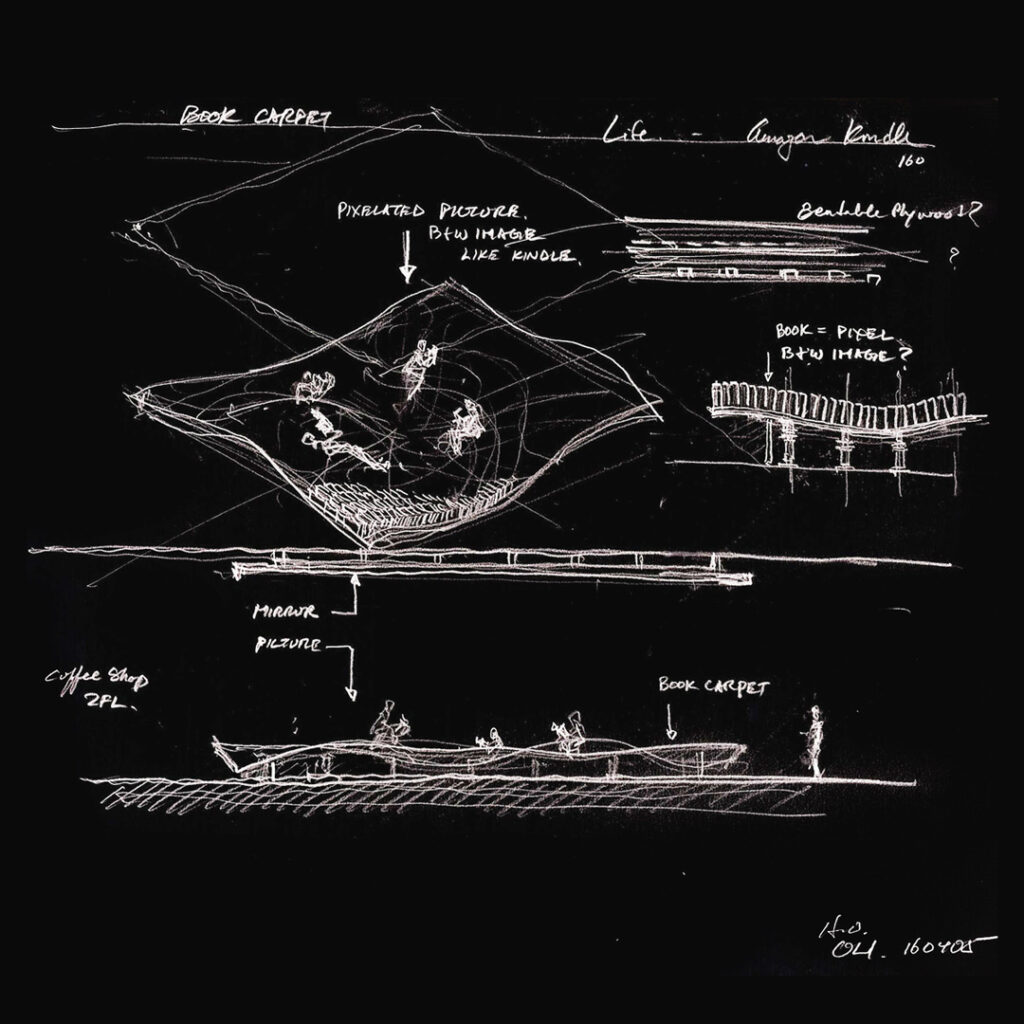
The inspiration for the installation, sponsored by Amazon, came originally from the large Tang dynasty (618-907 in Xian) furniture platforms where cuisine, entertainment, and the arts were elevated. We imagined a new type of platform made from a bed of books, undulating to allow for various areas of seating and lounging with today’s modern book, the Kindle. As each of the over 3,500 books that make up the bed would act as a pixel, we envisioned a mirrored image of the traditional bamboo book with the Analects of Confucius made up of the arrangement of the pixels like “e-ink.” As one comfortably lounges, a mirror suspended above the bed would make the pixelated text legible, bringing the past, present, and future together and allowing for the suspension of time in one place.
Project Gallery

